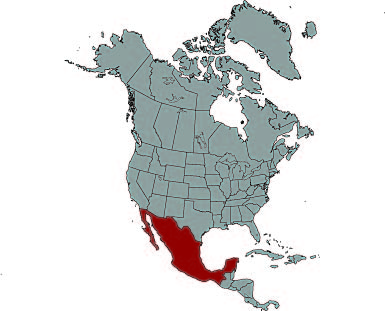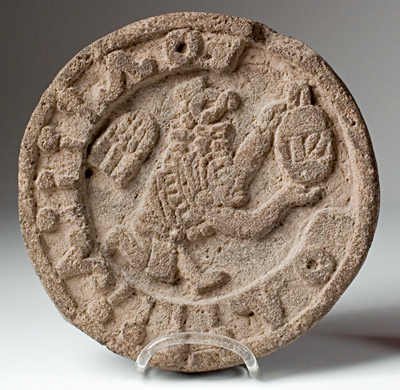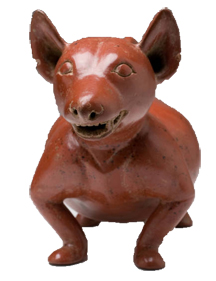

The game took place on a long narrow court with high walls. Three markers, such as this one, were spaced evenly along the walls. Players worked against gravity, using lower legs, thighs, torsos, and upper arms to hit the ball up at the markers. The difficulty of the game made for slow scoring, and many ended with only one point scored.
The Mayan game was an essential element to Mayan society, and courts were placed in the heart of the city. As with the United States' love of baseball, the Mayans played for pleasure and to demonstrate skill. Spectators took part in gambling and teams played aggressively. Despite the similarities, the ancient Mayan game possessed a much darker side. Players of the Mayan ball game played for their lives.
The game also held religious significance. Players symbolized death and rebirth. The captain of the losing team, often a high-ranking warrior, was sacrificed. Sometimes the loser's decapitated head was used as a ball.
900/1299 CE
Unidentified Maker
(Mayan People), Mexico
10 inches H
Gift of the Alconda-Owsley Foundation
1990.031.000
1271 Marco Polo travels to China.
1325 The Aztec civilization founds Tenochtitlan, modern day Mexico City.
1438 The Incan empire in Peru begins.
1492 Columbus discovers America.




